Can you even spot the SAAB tucked back there in the corner? Well, that is where it has sat for the past few weeks and it’s not just because I have been having more fun with the Mustang and the Miata. After fixing a bunch of small irritants and actually getting her running pretty well, a intermittent no-start has pushed the 900 to the back of the garage once again. I really want to love this much-maligned car, but man, it’s been hard work. Anyone want to take over the job?
After replacing a faulty coil a while back, the 900 sprang back to life. Even if it was a jerky and wheezy sort of life, it was still drivable. The engine would pull hard right up until operating temperatures were reached. Then the engine would hesitate and was normally followed by a series of flashing lights from the dash. Well, I pulled out my trusty workshop manual and did a little reading. Four blinks of the check engine light pointed toward a bad knock sensor. I tested the wiring leading up to it first just to be sure it was the cause of the problem. Sure enough, the sensor was shot.
Apparently my SAAB is equipped with a system that can actually adjust timing depending on the octane of fuel used. The whole idea is ingenious, but it also necessitates the use of what is basically a microphone. The knock sensor is bolted to the top of the engine to listen for “knock” and if it hears anything, a signal is sent to a little black box where some calculations are done to determine what changes need to be made. This type of technology may not sound cutting edge today, but when SAAB came out with this system it was high-tech.
Now it is just adds complexity to an already worn out system. Replacing the knock sensor did solve the hesitation problem, but there are still those pesky motor mounts and the dead starter to deal with. The systems on this car are so interconnected that a problem in an area can easily cause one in another. The coil failure was most likely caused by a bad spark plug wire. The bad coil meant multiple restart attempts while unexpectedly trapped in intersections which in turn caused damage to the starter. All this extra vibration and jerking over the past few years has caused the engine mounts to wear which also caused the tabs on the air filter box to crack. The cracks allowed more air to enter… You get the idea. One problem leads to another and another. Perhaps this is one of the reasons why some people became so disenchanted with SAAB.
All these little bugs needed fixing and the shops wanted more money because SAAB was considered an “upmarket brand”. I’m not sure how they went from Scandinavian workhorse to BMW fighter, but that is what the marketing department decided to do and that is who we can all thank for elevated part prices. Even with these issues, there is no denying that the engineering prowess that came out of Trollhattan were amazing. Even today it is not uncommon to find these old 900s with over 200k miles on their odometers… Well, if the odometer hasn’t stopped working yet.
I really wanted to prove all the negative stereotypes about these cars wrong. I wanted to demonstrate that anyone could keep one running on a tight budget without any specialized knowledge. Well, I dont think I did a very good job. Sure, there are still a few cars out there that have been meticulously maintained that could be used for years to come with minimal work, but that wasn’t the case here. I would like to move on now, but all this honesty is probably shooting me in the foot. Ironically, I know I might be on the downward slope of the hill now, but I’m still ready to jump ship.
Don’t get me wrong, there were some high points during my SAAB ownership experience. The quality of the body and the front seats always astounded me every time I sat inside. It really did feel like I was riding around in a tank on seats as firm as the day they left the factory. The design of that rear hatch area is also something that manufacturers today should aspire to. With a back seat that actually folds completely flat and six whole feet of loading depth, there wasn’t much I couldn’t haul home. It really did make a decent pickup alternative. So, with that all said – anyone want to adopt an old Swede?
Latest Project Updates
- September 25, 2014 – Say So Long To Our SAAB Project
- August 26. 2014 – The Dreaded Starter Swap
- August 13, 2014 – Ready To Move On
- June 10, 2014 – Digital Detective Work
- May 19, 2014 – Running Rough When Warm
- May 12, 2014 – Back in Service, Sorta
- May 6, 2014 – In the Junkyard Again
- April 18, 2014 – Who Needs a Truck When You Have a SAAB?
- April 3, 2014 – My Saab Story
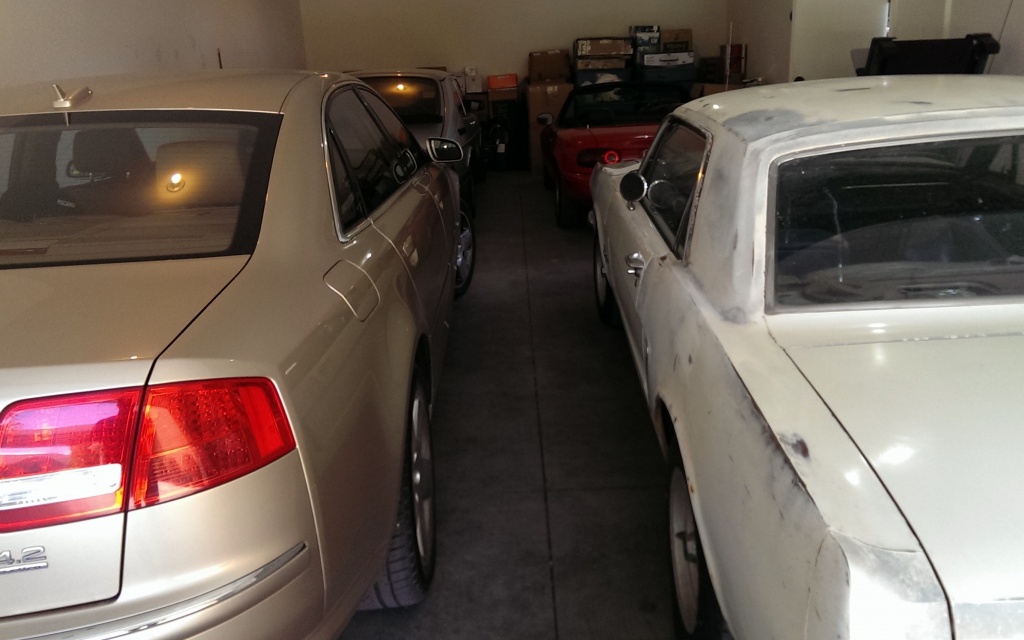
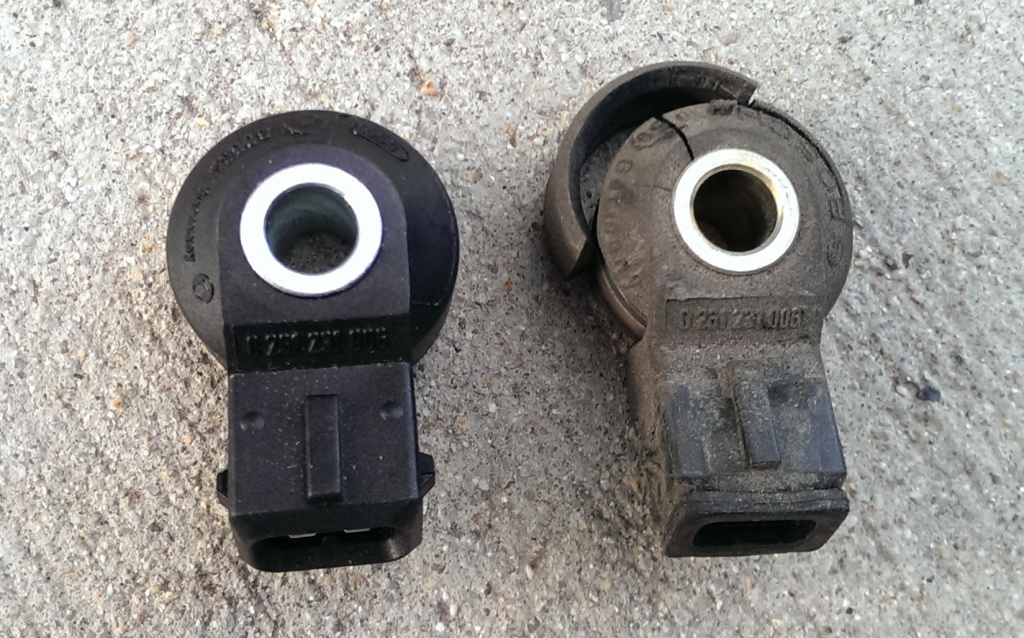
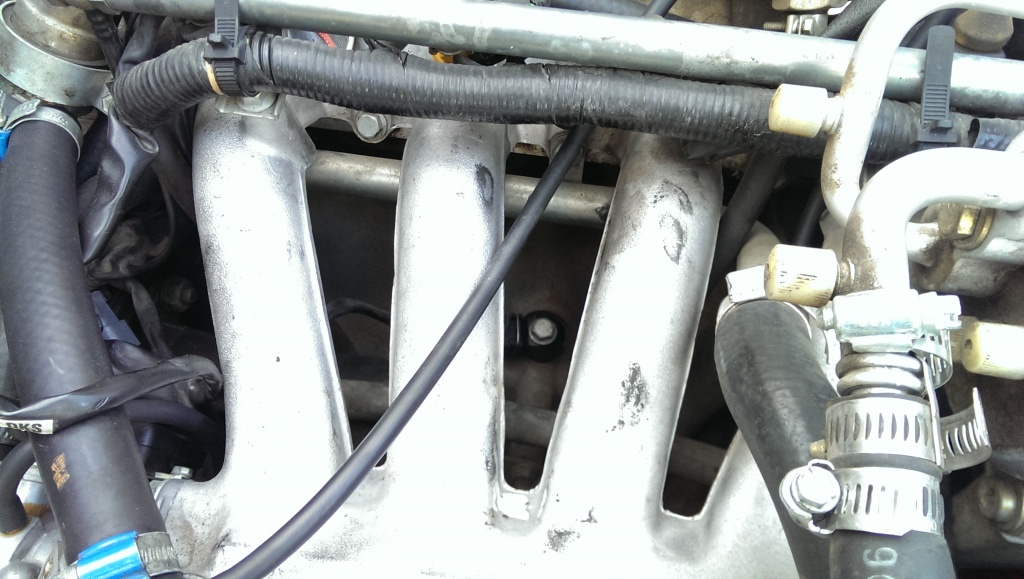
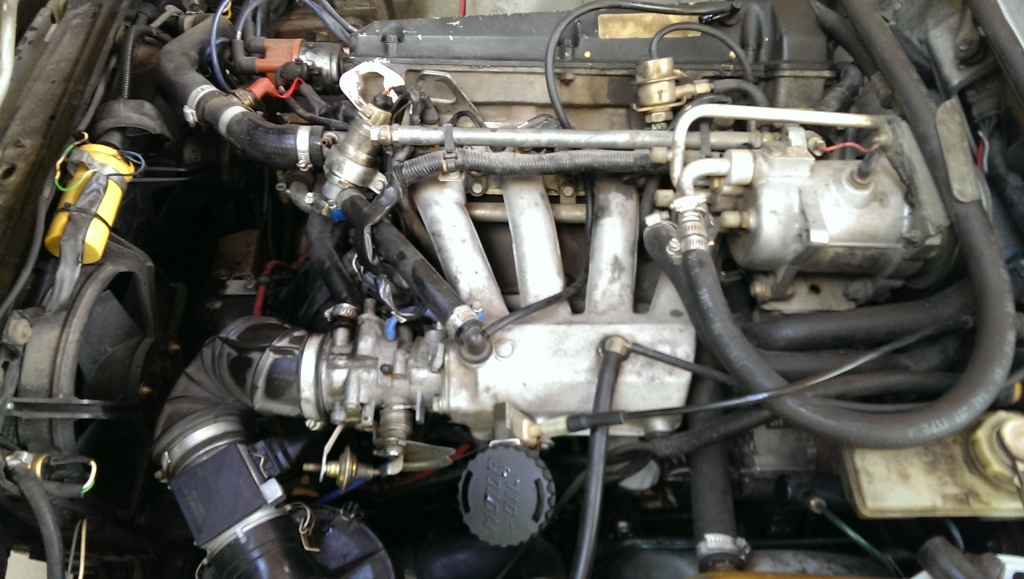
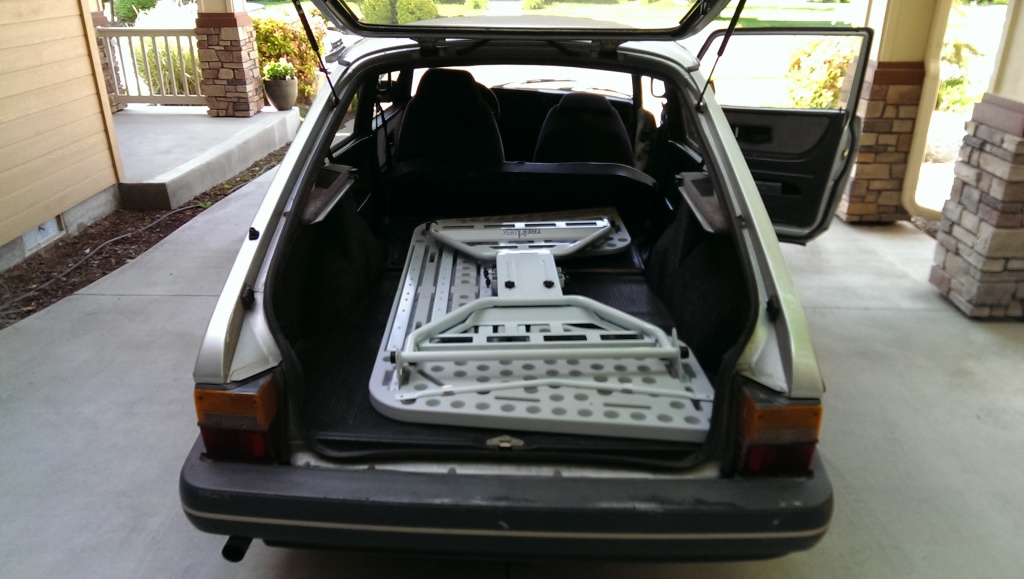
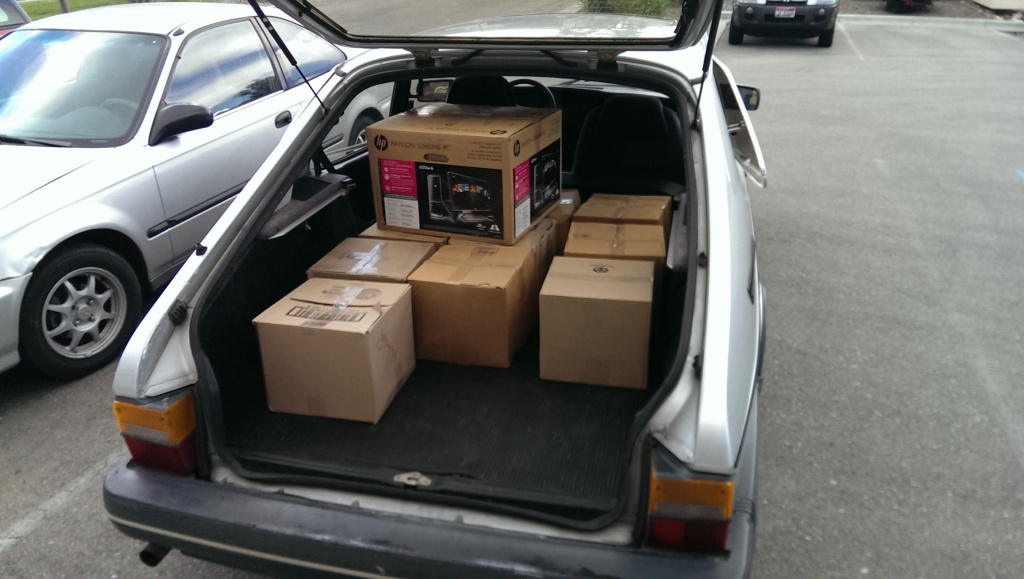
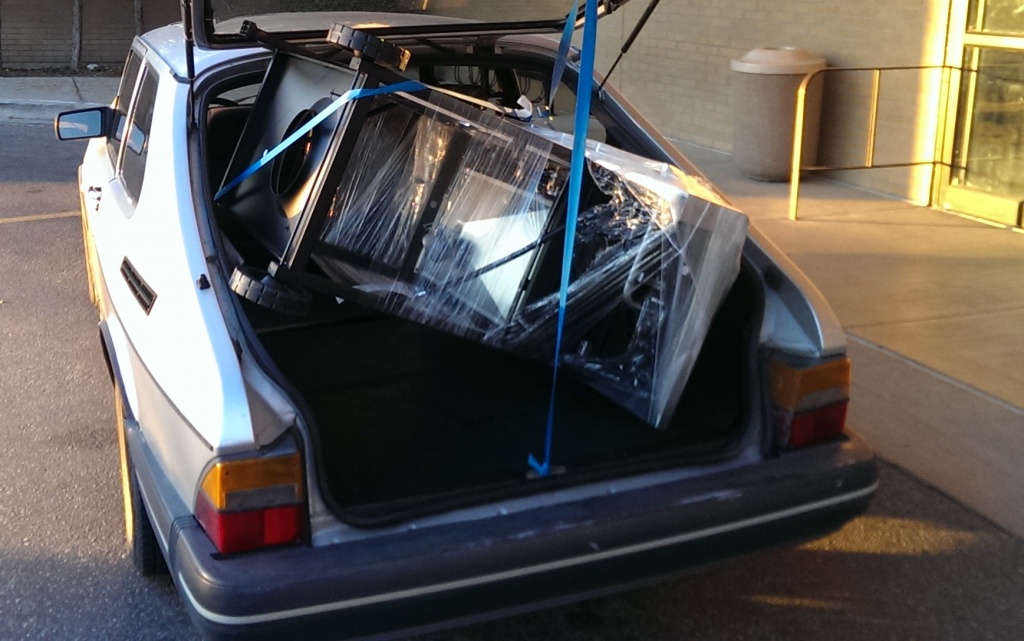

Long time lurker, first time poster. If by “adopt” you mean “its yours free so long as you continue the project and post pics and updates” then sign me up! I’m a professional mechanic and lover of the obscure (long time K-car fan and my very first ride was an 83 Skoda 120GLS… Love me some Ladas and I came _this_ far to buying an Innocenti once). Old Saab’s are right up my alley.
Well, if it comes to that Kris, you will be first in line. I would like to recoup some of my investment though for future BF projects.
How much and where are you located?
I paid $1,600 for the car, but after multiple junkyard runs and a few online orders I have probably dropped another $500 into it. I will try to put together a detailed list of everything spent and post it. Anyway, as mentioned above I would like recoup as much of that as I can for future projects. The car is located in Boise, Idaho.
Very nice cargo space. I had no idea that a Saab could do this. I do a lot of hauling for DJ work using heavy speakers, amps and lighting for dance floors. I have a tendency to run maximum load and the cost of replacing the wheel bearings, shocks and tires has not been too bad on my previous cars. There were a few bent rims until I changed from steel to cast aluminum rims.
Yeah, I have always been surprised by what fits in there. The wagonback design really was a good one. As you can see, we even managed to shove a fully assembled grill inside! The way the door opens makes it so you basically have wagon-sized cargo space as long as you are willing to tie things down and ride with the hatch open. I really think the design was a nice compromise between coupe good looks and wagon hauling capacity. Remember, these cars were originally designed to be tough do-it-alls for the people of Scandinavia. Somewhere along the line they became luxury vehicles for the yuppies of North America though…
Yes, Jesse, I do think you are likely on the downhill side. Sorry to see that you are giving up the Saab – it will be a fine car for the next owner!
Interesting! My 1987 Chrysler Conquest (aka Mitsubishi Starion) has a 2.6 liter 4 cyl turbo engine and has a ‘knock sensor’ to enable it to run on regular or premium also. I’ve heard the sensor dials back the boost if the engine knocks but I’ve never driven mine hard so I can not confirm or deny that fact. Never dreamed the sensor would be something as low tech as a microphone though!
Good luck and good bye with the Saab. Your experience pretty much matches what I remember of my parents Saab 99 from the early ’70s. Tank-like feel, great seats and a wonderful workhorse. Unfortunately there were also quality issues from when it was brand new, both mechanical and just quality wise such as the wood appliqué peeling off the dashboard and the handles coming loose from the air vent controls.
I was just wondering what had become of the Saab! Sorry to see you bailing out but I can understand your reasoning. It’s neither cheap or simple to keep a computer controlled car going, especially one with higher miles and age on it. Like the old childhood story; “when she’s good, she’s very good but when she’s bad, she’s horrid!” kind of applies to fuel injected cars. All those sensors can get expensive and, like most Euro lux cars, if you can’t or don’t want to do your own repairs, you’ll pay dearly to have someone else do them. I’m sure some Saab lover will take it off your hands and I’m excited to read about it’s replacement!
any price in mind?
If I could get $2k, I’d be ecstatic!
I remember when Saab had a three cylinder two stroke engine. An odd but harmless neighbor had several of them, and he seemed to keep them running with duct tape and hay bailing wire. One of them had the tendency for the exhaust to come loose from the manifold. It sounded like a ticked off bumble bee. I guess those days are long gone! Good luck with your sale. To the right owner, this car could be a gem, and NO it is not me…
nice 4 car garage! and what is that brown car on the left? is it time for an update on the miata. had saabs back before GM. we had a very good dealer which made it a lot easier to keep them running. maybe do an auction on this site. i sure hope the new owner will keep us updated.
The car on the left is a 2004 Audi A8L. It is a big beautiful car that drives wonderfully. It is also very complicated and expensive to maintain, so as you can guess, I have my hands full. Miata and Mustang updates will be coming soon!
Oh, and I’m going to leave the auctions to the experts!
Jesse, your travails with the ‘puter controls begs for a discussion on the “modern” vehicle systems and what this will mean to the future restorations. I’m already dealing with this on my ’97 Ranger, two systems (ECU & “Accessories”) on a work truck! The Boesh Jetronic on the Spider has to have pieces rebuilt, just because things are un-obtainium at 33yrs. old (as was the case on the 17yr. Ranger)! Manufactures are liable for a part for ten years, cars are lasting longer, on average, whether it’s the economy or better corrosion protection.
I’m thinking you’ll have to have 3 of anything made today to keep one running twenty years from now. The yards don’t keep ’em forever anymore, Ouch!
I too sometimes wonder what we will be restoring in another 25 years. I’m guessing we will all still want the old stuff because it is just easier, but I could wrong.
I’ve been giving this alittle thought and doing some research online about it as well, now that 1989 cars are now eligible for both antique license plates and Hagerty insurance (seriously? 1989 was like 5 years ago, right?!?). Even though late 80’s cars might be antiques, most of them are still dirt cheap and I was toying with the idea of picking up one for a cheaper fixer-upper and second car. The computer technology of these cars, while at that time blew my mind, is pretty darn basic now. Alot of the components were used in alot of different cars back then, so they are still available in the aftermarket without too much trouble. The problem is this: there are ALOT of small components on these cars that will leave you stranded if they fail on you. No problem you say; they are easy to find and they are usually not too expensive, let’s just replace them all and we can drive with no worries. This is true BUT…$50 each for a MAP, $45 for a crank position sensor, $30 for a O2 sensor, $300 + to get the ECM rebuilt, $80 a piece for new fuel injectors, $300 for a new fuel pump, $80 + for a variable fuel pressure regulator…etc…etc… Pretty soon you $800 project car has $2000 worth of “peace of mind” replacement parts and you’ve yet to replace the water pump, timing belt, radiator, tune up, brakes, new paint, seat cover, carpet…etc!
So, by the time your finished and have a car that looks good and can be counted on to function well on long trips or for a reliable daily driver, your into in for $8-10k, but it’s only worth $5k on the open market, top dollar on the best day ever! Sure there is always the cheap chinese parts via Ebay, etc., but they don’t offer you piece of mind, so your going to have to by OEM, or near, to get parts you can count on! On top of this, your probably going to be dealing with OBD I diagnostics if you have a problem which, in my humble opinion, is just a big pain (was that 5 flashes then 2 flashes or 6 flashes then one flash? Please!)! While it would be great to gain the knowledge and experience of working on one of these cars, financially, I think you’d end up tieing up alot of cash and halfway into it, you’d just wished you’d picked up that $3,500 67 Mustang with a six banger that you looked at the day before you bought this ’88 GM FOMOCO MOPAR with a no-start condition for $500! If you really wanna go 80’s, I think your probably better off to go RWD V8 American, so the option of jerking out that FI in favor of ole skool 4bbl is always open to you. Otherwise, just go older, it’s simpler, it cheaper, and you can spend all that money you saved not buying sensor on rust repair!
My 1st wife to be had to have a 70’s SAAB 99. I managed to learn a lot about them in the time she had it. If I ever meet another woman that wants a SAAB, I’ll know enough to run from them both!
Hey Jesse, enough about the “vintage” stuff, what’s the story on the Audi A8 (or A6)? Have you been holding out on us?
Barry Thomas’ “Wheel to Wheel” blog
As mentioned above, it is an Audi A8L. It is a great car for long distance trips and winter driving. We picked it up used a few years back and have put many enjoyable miles on it. Maintenance can get expensive, but considering that the odometer just hit 100k and we haven’t had to do any major work besides the timing belt, I think we are doing alright.
Jesse, absolutely 100% agree with you. That Audi is a lovely car, but like the other high end German brands, repair costs can be frightening. I always think that Audi buyers are a more discerning bunch, than BMW or Benz, since the Audi is not so in your face (if you know what I mean) as a 7 series or an S class would be. Great value used as well.
Barry Thomas’ “Wheel to Wheel” blog
I’ve been lurking and wondering about the SAAB.
Thanks for the update.
Love the A8, gorgeous color.
Thanks Elizabeth for the compliment and for joining the conversation!
Back in the day – the Saab 3 cylinder/DKW were the only cars that could “fart” smoke rings!
more money for the mustang project…
Exactly, doesn’t look like there is much interest though…
you may need to try listing it on ebay also.
It will be interesting to see what becomes of the rolling computers we are all driving these days. If we restore them, or junk them and recycle them like they are designed.
My 82 Trans AM is the first of the computerized Firebird’s It has the Computer Command Control with the computerized carburetor and ignition system. The car only has 24,600 miles on it an parts are not difficult to find, nor are they expensive compared to an import. However this is proving to be the most difficult part of this car to maintain in OE condition. The system self diagnosis, and so far is working as designed. It sounds like the system on your Saab is quite a bit more complicated and expensive to work on.
Funny but I have always had the most reliability with Saab’s. Easy to work on and excellent handling. Most folks panic when it is time to work on a Saab, then make excuses as for the problems, just like we are finding here in this article. Fact is most of the problems are related to someone using the wrong replacement part (coil in this case), lack of proper maintenance, bad mechanic (poor attitude) or as we see here wanting a different car/s. The challenge in fixing a Saab is don’t make it complicated, it usually isn’t and is an easy fix. But hey if you want to work on your car by all means by an old Mustang or Miata and then modify it, then you talk about what you did, not what was fixed…